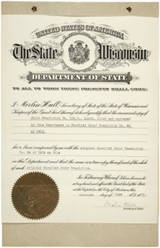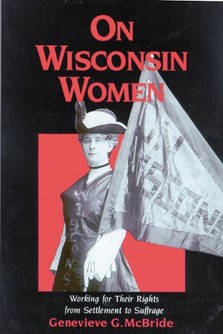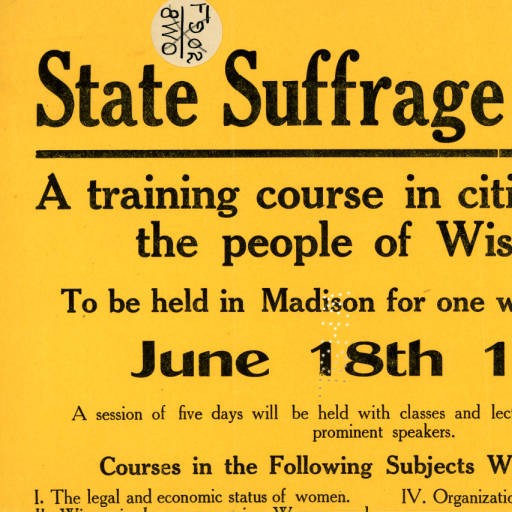Wisconsin Becomes the First State to Ratify Women's Suffrage Amendment, 1919
Introduction
Text-to-speech Audio
Images
On June 10, Wisconsin became the first state to ratify the 19th Amendment. Illinois ratified the amendment several hours later.

Genevieve G. McBride: On Wisconsin Women: Working for Their Rights from Settlement to Suffrage- Click the link below for more information about this book

The Wisconsin Woman Suffrage Association operated suffrage schools in 1914. These schools helped promote the idea of universal suffrage and recruiter participants and leaders in the final years of the fight for equal suffrage.

Backstory and Context
Text-to-speech Audio
In 1887, suffrage leader Olympia Brown tested the law that allowed women to vote in school elections by also voting for municipal offices. Brown argued that because women were not explicitly forbidden from voting in these elections that her ballot was valid because city officials made many decisions that shaped the local schools. Brown sued the city of Racine in an attempt to compel city officials to accept her ballot. Brown won her case in the Circuit Courts but the state Supreme Court reversed the decision in Brown v. Phillips (1888). In the meantime, many women found that their votes were thrown out because the ballots for some school board elections were the same forms that included other electoral races. The women of Wisconsin faced this obstacle until 1901 when the legislature authorized separate ballots for men and women. By this time, however, the women of Wisconsin were pushing for full suffrage rights.
Women pressed for full suffrage rights in other elections in the next three decades and secured a referendum on the measure in 1912. Although two-thirds of the all-male electorate rejected the provision, Wisconsin women escalated their efforts in the next seven years, organizing suffrage schools that taught a curriculum of civics and politics. In the next year, bills providing for equal suffrage were presented to each session of the legislature. Women also lobbied successfully for equal suffrage in presidential elections in 1919. Most famously, Wisconsin women pushed for the ratification of the 19th amendment and Wisconsin became the first state to ratify the amendment. The successful campaign was the culmination of years of efforts, the most recent of which occurred right here at the steps of the state capitol.
Cite This Entry
Trowbridge, David J. and Clio Admin. "Wisconsin Becomes the First State to Ratify Women's Suffrage Amendment, 1919." Clio: Your Guide to History. April 5, 2016. Accessed March 17, 2025. https://theclio.com/tour/776/6

